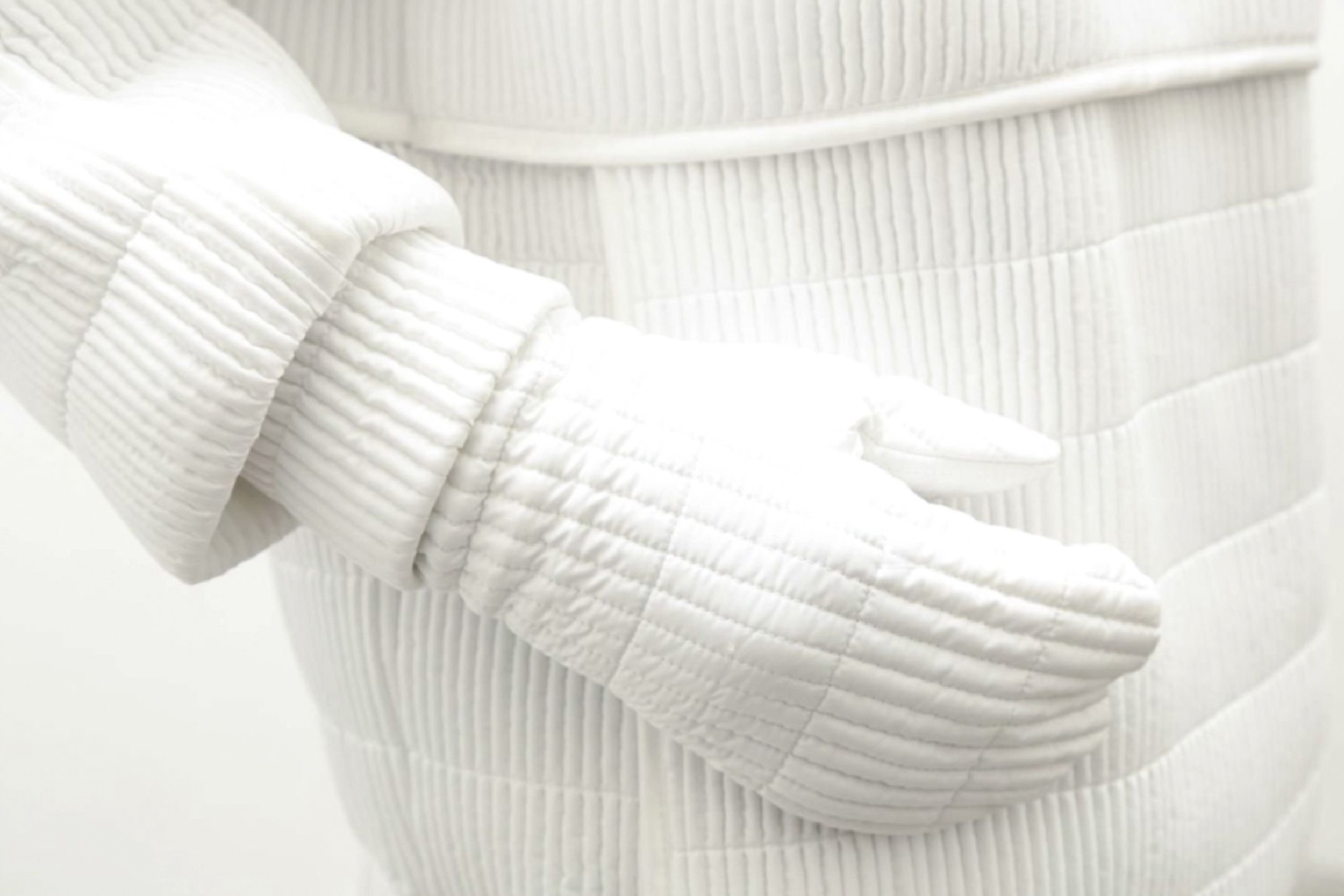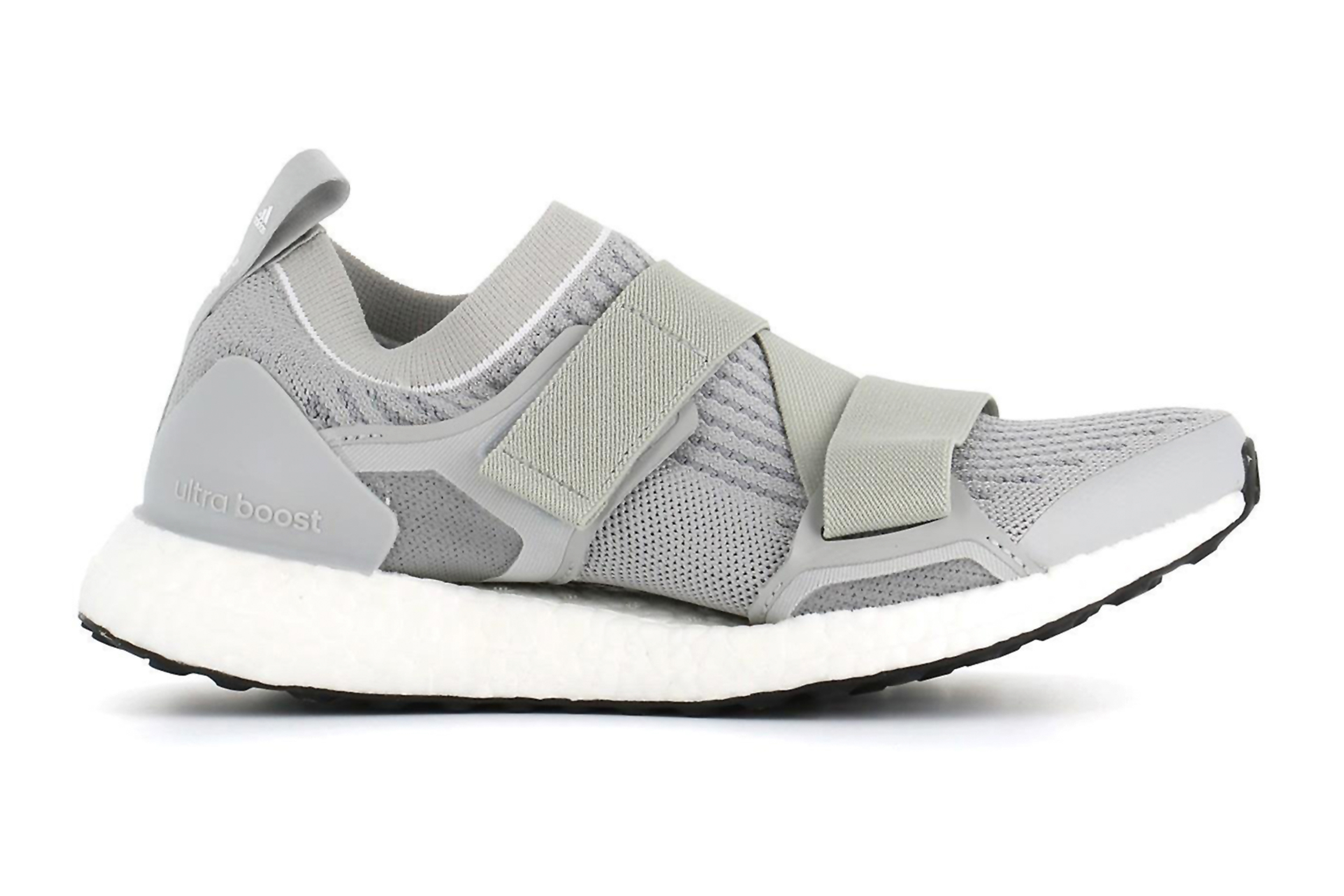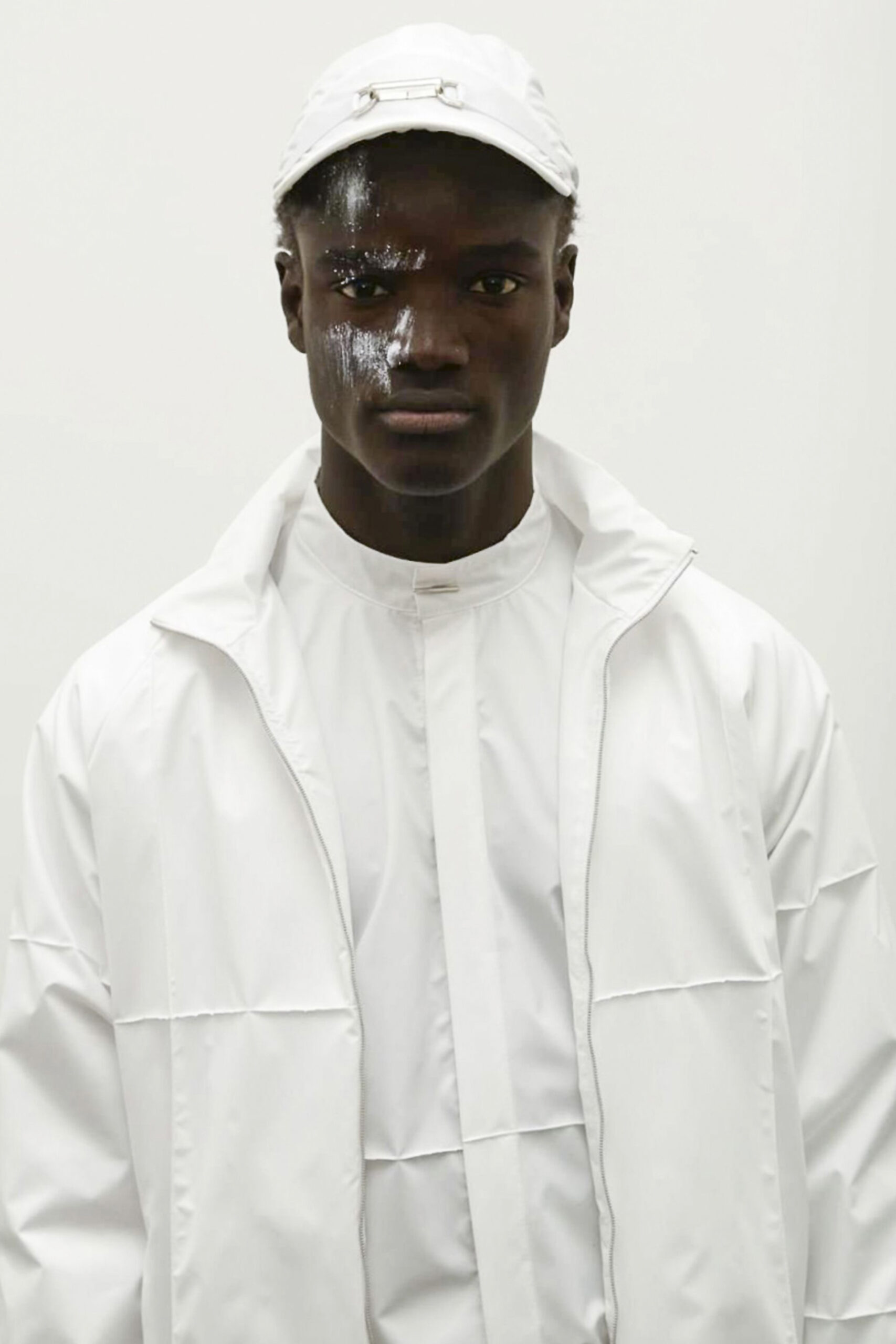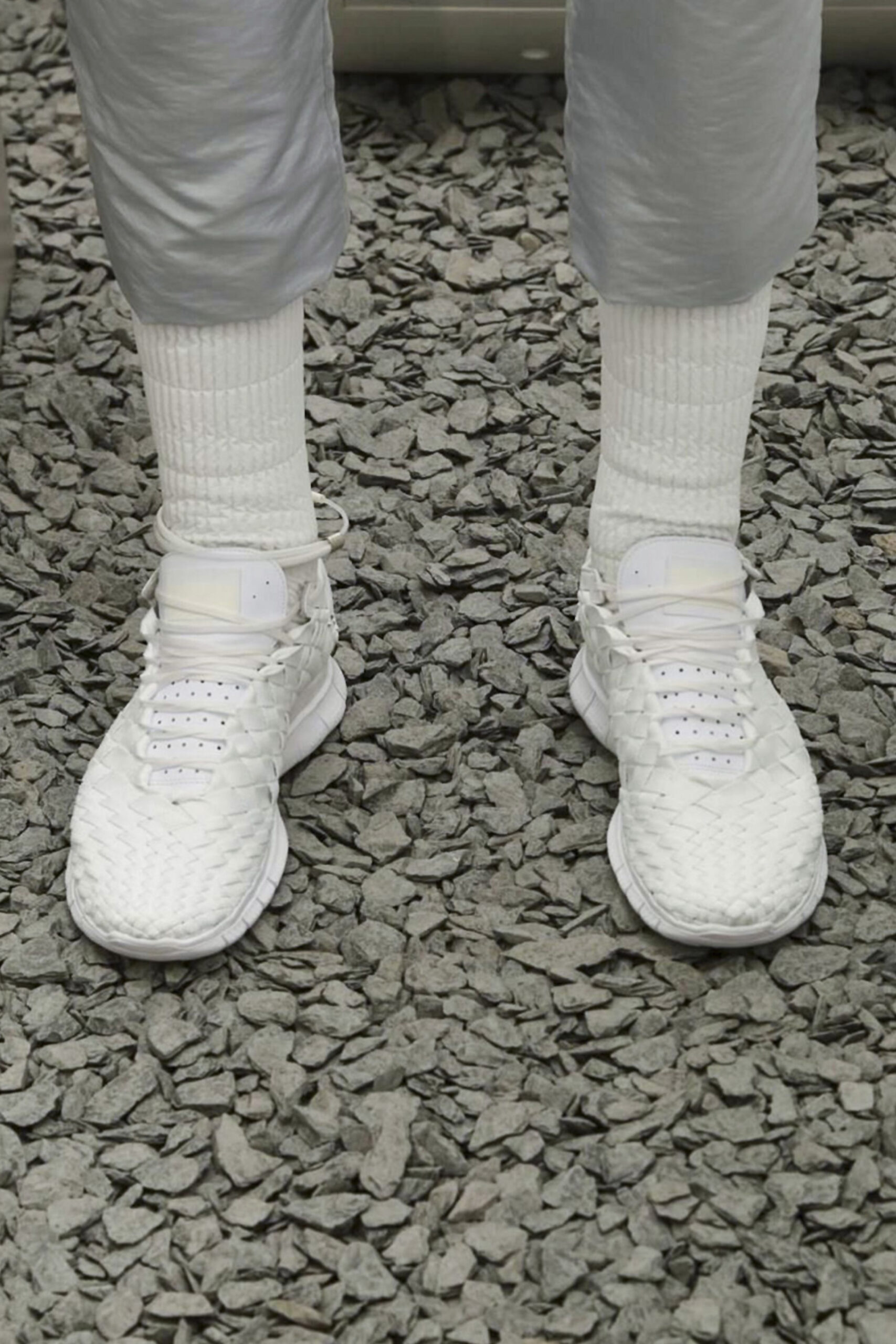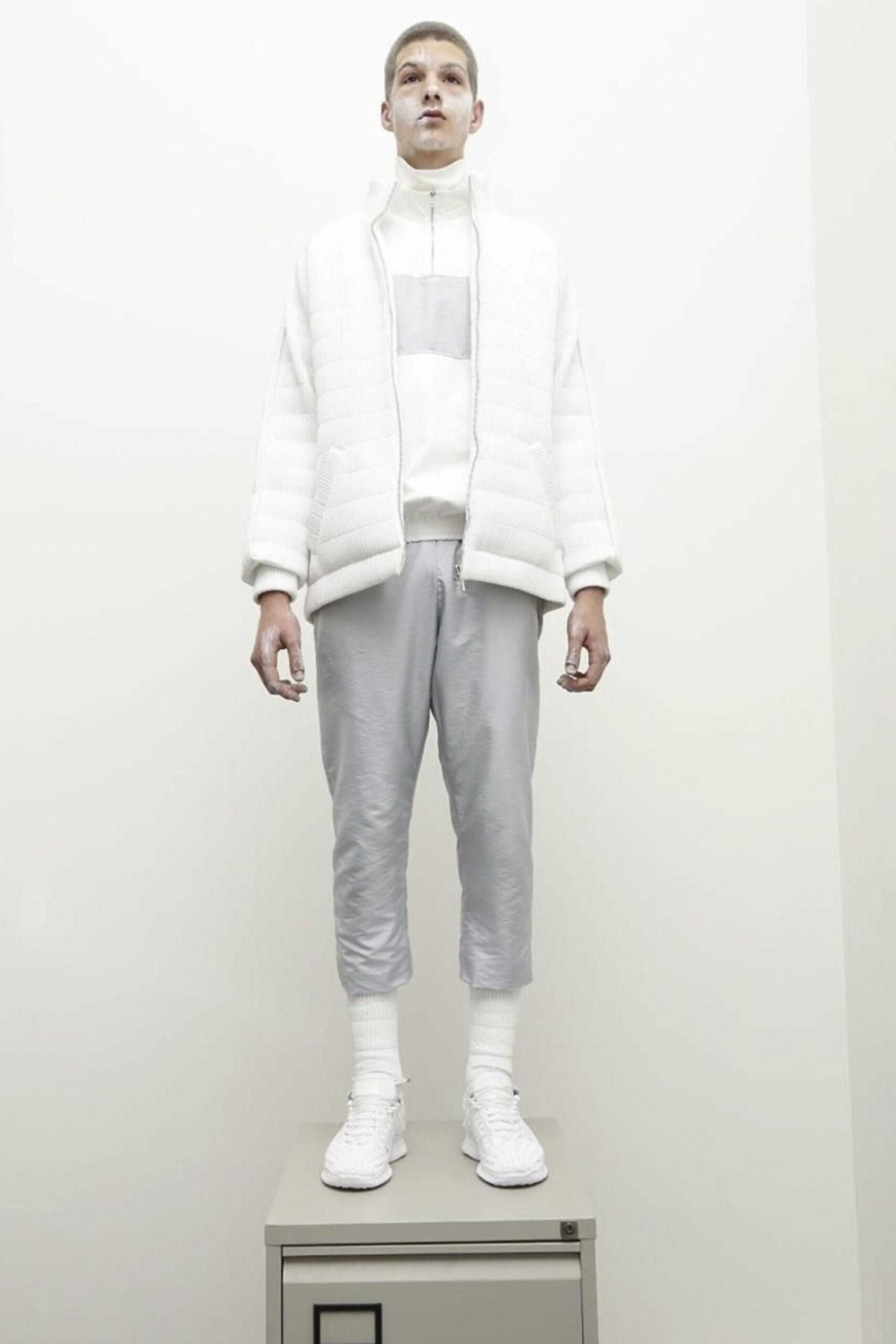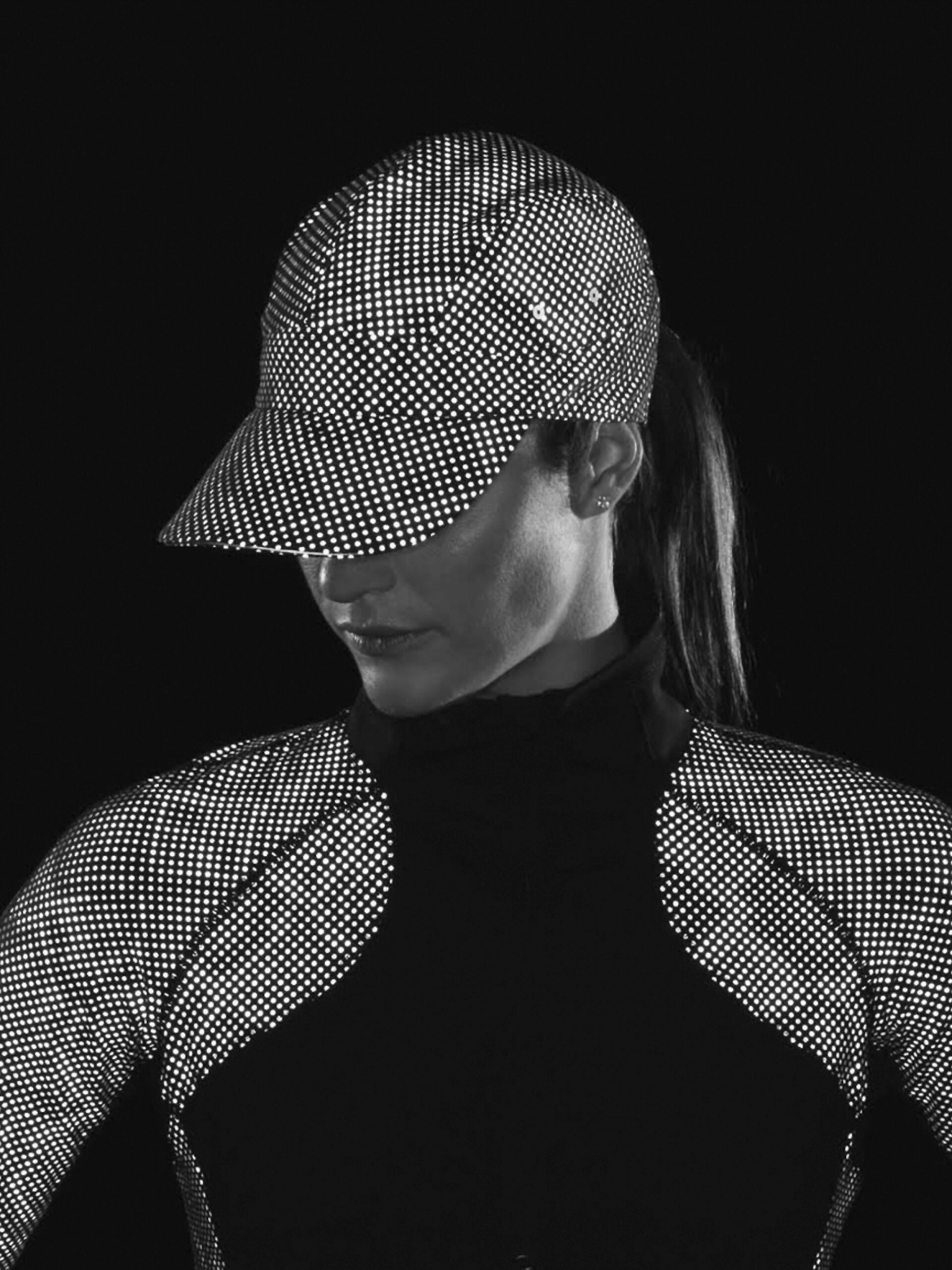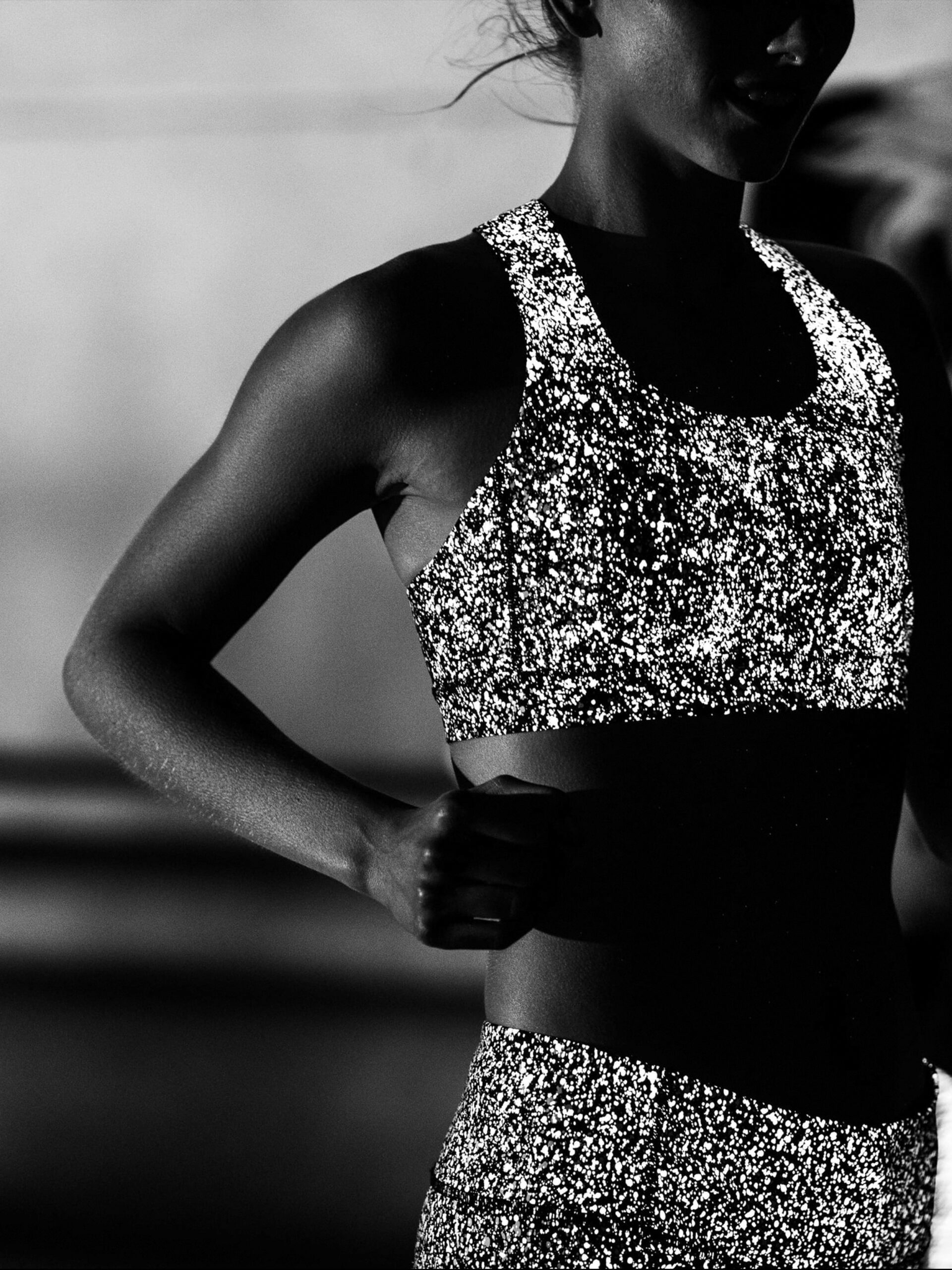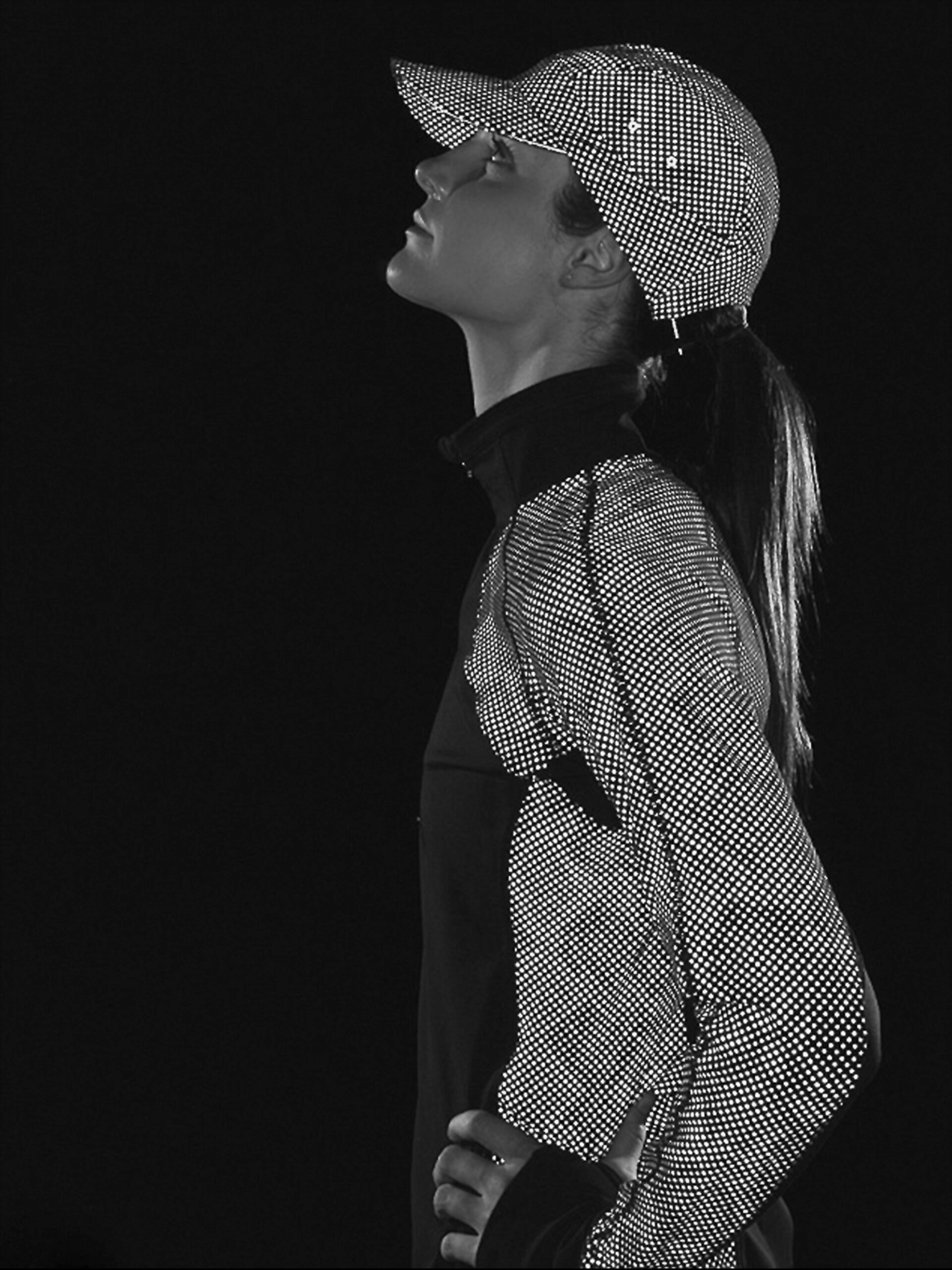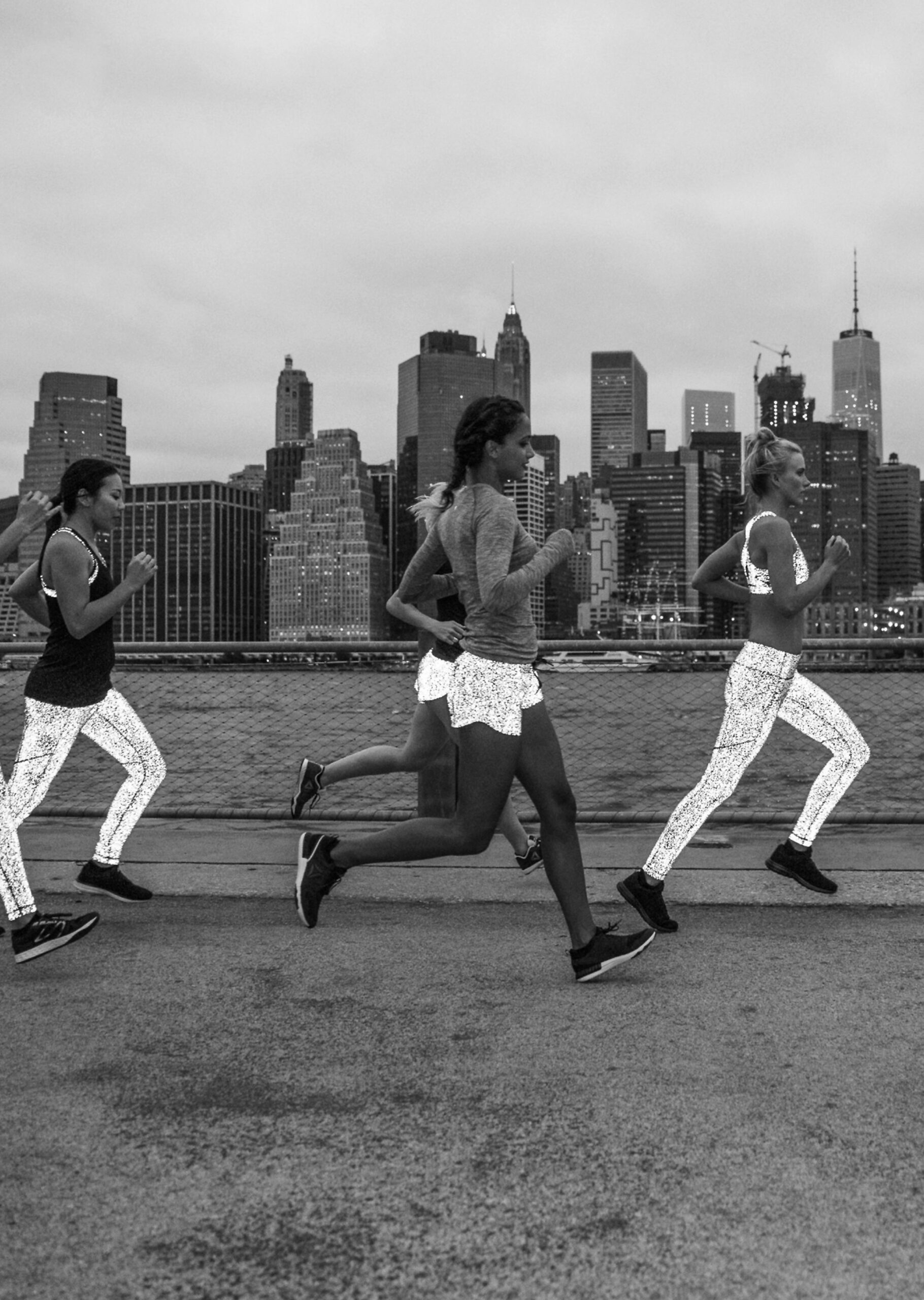JOAN BILLING & SAMUEL EBERLI
11.07.2019
“Athleisure” - Fashion for Digital Nomads
LEFT: Cottweiler is a British concept menswear label with casual wear that pays attention to simplicity, function, cut and manufacturing standards. This attitude is celebrated by their skilfully made products. ©Christopher Dadey RIGHT:Whether in the city, in the gym or on the track, this neat shoe was created especially for long runs. Adidas by Stella McCartney Sneakers Ultraboost ©Adidas
On the Markus Lanz chat show in 2012, when Karl Lagerfeld made the statement “Sweatpants are a sign of defeat. You lost control of your life, so you bought some sweatpants,” no one could have imagined how a single statement could have had such a strong effect worldwide. Just a few years later, the same Karl Lagerfeld on behalf of Chanel, sent jogging pants, leggings and tweed sneakers over the catwalk. It was this brilliant turnaround that enabled a new symbiosis of high fashion with sportswear. And all the luxury brands then followed in this new direction. This new fashion megatrend became referred to as “athleisure”, combining the words “athletic” and “leisure”. It describes the main influences that have shaped this development: Functionality and convenience combined with good design. Athleisure has become a modern status symbol with a feel-good factor. And has already started to represent a social trend.
LEFT: Technically solid, functional and skilful, Cottweiler fulfils the vision of all-purpose clothing. MIDDLE: Functional and aesthetic sportswear becomes a statement. RIGHT: The natural is blended with the artificial, updating simple sports clothing with innovative and luxurious fabrics. All images ©Christopher Dadey
High-Fashion meets Sportswear
Hybrids and interdisciplinary collaborations by the big brands also show just how close fashion and sport have become. Co-operation with world stars has lent sportswear a contemporary make-over and created new power partnerships, such as that of Rihanna and Puma or top model Gigi Hadid and Reebok. Sportswear is therefore gaining new credibility, interest and glamour. Athleisure can be found, not only in gyms and on sports fields, but also in offices, restaurants and even on the red carpet. This new sportswear is experimenting with high-fashion materials such as cashmere, tweed and silk, and the high-fashion world in turn is playing around with functional textiles such as softshell, mesh or neoprene in sportswear. This creates an exciting win-win situation for all involved. The athleisure movement has now advanced so far that there is little difference between the sports department and a luxury boutique. So it’s not surprising that the luxury department store Bon Marché in Paris has set up the first athleisure area between expensive luxury brands. Webster’s Dictionary has also officially adopted the new term “athleisure”
Athleisure, the uniform of the 21st century
Industry giants such as Adidas, Puma and Nike have long since discovered that even non-sporty people want to look athletic and sexy, and have therefore entered into partnership with top designers. The fresh look of their sportswear extends the aesthetic spectrum of the sports industry far beyond fleece jackets and neon colours. One of the first companies was Adidas, which entered into a long-term partnership with Stella McCartney in 2005 and launched a sportswear collection. It was the first time a leading fashion designer had designed a functional sports line for women. Raf Simons, Rick Owens, Jeremy Scott, Yohj Yamamoto and Alexander Wang followed suit. Another sign of this emerging athleisure trend was seen in 2014, when online giant Net-a-Porter launched a sportswear offshoot called Net-a-Sporter. In addition, in Autumn 2014, H & M introduced a collection by the American designer Alexander Wang, who in turn included softshell in his collection, causing a sensation in the fashion world. For him, sportswear is a kind of uniform for the 21st century.
And now, luxury brands such as Kenzo, Hermès, Prada, Chanel, Gucci, Dior and Tom Ford have their own interpretation and standard collections of classic sneakers and sweatpants in their luxury boutiques. Seven years ago, this would have been unthinkable. At last, high-fashion is no longer only about a chic look, but also about the functional, comfortable feel-good factor.
The strongest growth segment
The “athleisure” megatrend of comfortable fashion sportswear has become a cross-sphere statement and one of the fastest-growing segments in the lifestyle and clothing industry. While total retail sales stagnated in America, sportswear sales increased 24% in 2018. According to NPD Group, the US market research firm, this segment has continued to grow in 2019. In 2017, Adidas recorded sales of EUR 3.8 billion in North America, the strongest sporting goods market, 35 percent up on the previous year. Last year, the pioneer of this trend, the Canadian yoga brand Lululemon, achieved record sales, and in the second quarter of this year it was able to almost double its profit, to EUR 623 million. The athleisure wave is unbroken and is continuing to anchor itself. According to Forbes, the US business magazine, the market for athleisure could reach 232 billion dollars globally by 2024. Further growth is emerging in Asia, where this trend is just starting. Given these figures, it may lead you to think that people are becoming sportier, but this is far from true. The NPD Group discovered that nearly half of sportswear purchased was worn as everyday wear for leisure time, at work or at school.
LEFT & RIGHT: A reptile look is ideal for reflective areas on the breathable fabric. Plasticity is created by the pattern and the wearer is more visible. MIDDLE: The Lululemon brand has a functional range with breathable and moisture-wicking fabric. ©Lululemon.
Megatrends “New Work” and “Health”
An additional factor in the unstoppable success of the athleisure lifestyle is globalisation and digital transformation. This requires more mobility and individualisation and has subsequently triggered structural change in our society. One indication of this is the increasing blurring of the boundaries between work and private life, which in turn has changed our way of living, working and dressing. Our time is also in short supply, resulting in the boundaries disappearing. More and more people today are carrying out their work sitting or at a computer and therefore as a whole do not move enough. Maybe this is why the new Y and Z Generation Sport and Health has become a focus of interest. The athleisure trend is closely linked to the two megatrends “new work” and “health”. In the future, functionality and convenience will be a central theme for all areas of our life. Therefore, outfits need to be straightforward, flexible and appropriate for different functions, in order to be able to wear the look in the office, outside, at an exhibition or restaurant or at university. Sneakers have now become an indispensable part of our everyday life. Even just wearing sportswear sometimes gives us the feel of being healthier and fitter.
Only as far back as seven years ago, the fashion and sportswear divisions were separate. Whilst fashion designers have always been inspired by sportswear detail and material, it did not occur to anyone to actually wear these outfits for sport. Until then, the style transfer was one-sided, from sportswear to fashion. But now anything seems possible. Wherever you look, you can see waterproof zips, drawstring, skin-tight mesh tops, sweatbands, all types of rucksacks with dangling water bottles. Sneakers now look like neoprene socks and can be found not only in the gym, but also in luxury boutiques. It is now normal to combine cashmere sweatpants with high heels or wear fine wool bomber jackets. Anyone wearing sweatpants represents the new status symbol of fitness, discipline and a healthy lifestyle. Thanks to athleisure, there is only a fine line between the fitness look and cool fashion outfits.
The Lululemon collection has a reflective range with 360° reflectivity, which makes the wearer more visible. ©Lululemon.
Photography: Lululemon, Christopher Dadey
